The Civil War activity on the prairies of Hathaway was limited to supply activity, Confederate patrols, Union and Confederate troop movement, and probably Jayhawker activity. The residents of Southwestern Louisiana were a mixed-bag, as far as support for the Confederacy or the Union. Some thought the war was fought to save the wealthy class, and wanted no part of it. Those people either kept to themselves, aided the Jayhawkers, or supplied Union troops with cattle and other foodstuffs. Others kept their allegience with the Confederacy and joined the fight against the Union in battles throughout the South.
Most of the activity on the prairies of Hathaway was dispatched from the Confederate quartermaster depot at Nibblet's Bluff on the Sabine River located about 10 miles north of Orange, Texas. The main dispatch from Niblett's Bluff was supplies. The supply route from Texas to Opelousas ran from Houston to Beaumont by train, then by steamer to Sabine Pass and finally Niblett's Bluff. There, empty, incoming wagons were loaded and put back en route to Opelousas. One of the routes crossed the praries of Hathaway to Vitterbeaux Crossing over Bayou Nezpique. The other dispatch from Niblett's Bluff were patrols scouting for approaching Federal troops or hunting down bands of Jayhawkers. In the Fall of 1863, 30,000 Federal troops were ordered by Abraham Lincoln to move overland across south Louisiana to Texas. This campaign is known by Civil War historians as the "Texas Overland Expedition."
The first battle in this Federal campaign was not on land. It was the Battle of Sabine Pass. The first objective of the Federal battle plan was to establish a base of operations for the Texas front. On September 8, 1863, Major General Nathaniel P. Banks led Federal gunboats in an attack on the Confederate blockade-running post of Fort Griffin at the mouth of the Sabine River on the Louisiana-Texas border. Forty-four Confederate soldiers defeated the Union invasion by firing 137 cannonballs with great accuracy into the Sabine River and sinking one of the Federal gunboats, capturing 200 Union soldiers, and repelling the other three gunboats.
Continuing the Federal campaign toward Texas, Banks switched his battle plan to land. He sent troops up Bayou Teche to disembark and march toward Texas. When the troops crossed the Atchafalaya River in Pointe Coupeé Parish, Confederate troops attacked them on September 29, 1863. This was the Battle of at Stirling's Plantation. With rain and mud slowing Union reinforcements, Confederate troops were victorious but many Union troops were able to escape. Banks was intent on marching to Texas.
Confederate Major General John Bankhead Magruder understood this and made sure patrols were out in force because Major General Richard Taylor was occupied fighting back Union assaults, as evidenced by the Battle of Stirling's Plantation. One such patrol across the Hathaway prairies is documented in the Official Records War of the Rebellion, Union and Confederate Armies:
October 28, 1863: Colonel Buchel wrote to Captain Turner that if the enemy crosses the Mermentau, he could order state troops forward from Beaumont to the Calcasieu River. He said Lieutenant Aikens with 20 men were guarding crossings of the Mermentau [Vitterbeaux Crossing on Bayou Nezpique is likley one of those crossings]; Captain Beaumont with his company at Pine Island, between the Calcasieu and Mermentau [Survey of Hathaway in 1805 and 1857 both show "Pine Island" northeast of where Hathaway High School is now]: Captain Nolan was at Lacassine Bayou trying to secure powder on the Antelope, and Captain Montgomery was at Calcasieu Crossing. (Vol 26, Series 1 (Part II), p. 367)
 The patrols across the Hathaway prairies probably encountered Jayhawkers, but not Union troops. This is because Confederate troops to the east were beating back Banks' overland expedition. Banks again sent several divisions, totaling 19,500 troops, up the banks of Bayou Teche to meet and move toward Texas. The terrain and climate of Louisiana would prove too much. Bayous became too dangerous to cross, muddy roads slowed troop movement, and foraging was becoming more difficult. These conditions scattered the Union troops and exposed them to surprise attack, which is exactly what happened on November 3, 1863 at the "Battle of Bayou Bourbeau" fought near Washington, Louisiana (about 7 miles north of Opelousas). This was the closest Civil War battle to Hathaway. Confederate forces were victorious once again causing Federal withdrawal from the Texas Overland Expedition.
The patrols across the Hathaway prairies probably encountered Jayhawkers, but not Union troops. This is because Confederate troops to the east were beating back Banks' overland expedition. Banks again sent several divisions, totaling 19,500 troops, up the banks of Bayou Teche to meet and move toward Texas. The terrain and climate of Louisiana would prove too much. Bayous became too dangerous to cross, muddy roads slowed troop movement, and foraging was becoming more difficult. These conditions scattered the Union troops and exposed them to surprise attack, which is exactly what happened on November 3, 1863 at the "Battle of Bayou Bourbeau" fought near Washington, Louisiana (about 7 miles north of Opelousas). This was the closest Civil War battle to Hathaway. Confederate forces were victorious once again causing Federal withdrawal from the Texas Overland Expedition.After the retreat of Banks, the Union enemy in Southwestern Louisiana was mainly sympathizers called "Jayhawkers." The two main groups were the Calcasieu Jayhawkers and the Mermentau Jayhawkers. The Jayhawkers were men who had abandoned the Confederate conscript in 1862 and hid in the forests and cane breaks in the marsh. Many were Union sympathizers from Southwestern Louisiana and Texas who were helping the cause by stealing Confederate supplies moving between Niblett's Bluff and Opelousas or attacking blockade-running ships docking on the Calcasieu and Mermentau Rivers.
Although there was a small, abandoned fort made of mud at Calcasieu Pass, near present-day Monkey Island at Cameron, it was ignored by both sides for most of the Civil War. This made the Calcasieu River a major artery for Confederate blockade-runners. In late-April, 1864, Confederate patrols noted two Union gunboats docked at Calcasieu Pass. Although the Union boats were there only to buy 450 cattle stolen and sold by Jayhawkers, on May 6, 1864, Confederate troops from Sabine Pass attacked and captured two Union gunboats, Wave and Granite City, which were later converted into Confederate blockade-runners.
Yes. No records have been found for anyone who served in the Confederate Army that resided in the Hathaway area during or after the Civil War, but there is hope: http://www.acadiansingray.com/. At least one resident served the Union Army during the Civil War, and years later homesteaded in the Raymond. His name was Gilbert N. Brown. He settled in Raymond twenty years after his discharge. He enlisted on September 10, 1861 when he was living west of Chicago in Winfield, Illinois, where he was born.
Gilbert N. Brown was born December 21, 1841, but his enlistment record shows that he was recorded at 22 years old. At the time of his enlistment he was farming with his father, Simpson Brown. He had brown hair, blue eyes, fair complexion, and stood 5'11''. On November 19, 1861, after two months of drills, Gilbert was assigned to the newly formed 52nd Infantry Regiment, Company D, out of Geneva, Illinois. On November 28, he and 944 other men were moved to Benton Barracks in St. Louis, Missouri. They were thrown into the heat quickly, joining the Army of Tennessee at the Battle of Shiloh on April 6th and 7th. Three weeks after the Confederate retreat from Shiloh, they were sent to Corinth, Mississippi, where the Confederate troops had retreated. Soon after, Corinth was controlled by Union troops.
 For the next three years, the 52nd Illinois Infantry encountered many battles along the southern border of Tennessee. In the middle of that three-year campaign, on January 9, 1864, Gilbert and his fellow soldiers re-enlisted, receiving a furlough until February 24, then returned to Pulaski, Tennessee to continue its maneuvers. From April 30, 1864, the 52nd Illinois Infantry battled its way from Chattanooga to Savannah, Georgia, joining General Sherman’s March to the Sea in mid-November 1864. In January of 1865, the 52nd Illinois Infantry began its Carolina campaign, ending its fighting in Raleigh, North Carolina on April 14, 1865, ten days after the assassination of Abraham Lincoln in Washington D.C.
For the next three years, the 52nd Illinois Infantry encountered many battles along the southern border of Tennessee. In the middle of that three-year campaign, on January 9, 1864, Gilbert and his fellow soldiers re-enlisted, receiving a furlough until February 24, then returned to Pulaski, Tennessee to continue its maneuvers. From April 30, 1864, the 52nd Illinois Infantry battled its way from Chattanooga to Savannah, Georgia, joining General Sherman’s March to the Sea in mid-November 1864. In January of 1865, the 52nd Illinois Infantry began its Carolina campaign, ending its fighting in Raleigh, North Carolina on April 14, 1865, ten days after the assassination of Abraham Lincoln in Washington D.C.  Two weeks later, the 52nd Illinois Infantry marched to Washington D.C. to march with General Tecumseh Sherman’s Army of Georgia in the Grand Review of the Army, a victory parade for the Union Army. On May 24, 1865, Gilbert marched with 65,000 infantrymen down Pennsylvania Avenue. The day before, 80,000 infantrymen of General Gordon Meade’s Army of the Potomac marched from the Capitol in front of the reviewing stand in front of the White House.
Two weeks later, the 52nd Illinois Infantry marched to Washington D.C. to march with General Tecumseh Sherman’s Army of Georgia in the Grand Review of the Army, a victory parade for the Union Army. On May 24, 1865, Gilbert marched with 65,000 infantrymen down Pennsylvania Avenue. The day before, 80,000 infantrymen of General Gordon Meade’s Army of the Potomac marched from the Capitol in front of the reviewing stand in front of the White House.By the end of the Civil War, Gilbert had reached the rank of sergeant. He was mustered out July 6, 1865 and discharged on July 12, 1865. By 1870, he was living in Albion, Iowa, farming with his father and brother. His father, Simpson Brown, died in 1878. Twenty years after his discharge from the Union Army, on August 5, 1885, Gilbert Brown purchased a half-section on the prairies north of Jennings.
In the 1930 Census, Joseph is recorded as 94 years old with a 66 year old wife. He is also recorded as a Civil War veteran. In fact, Joseph was only 84 years old and arrived in the U.S. 15 years after the Civil War had ended. Census information is only as good as the person asking the questions and recording the answers and the person giving the answers. The best plausible explanation for this misinformation is that someone besides Joseph, probably his 20 year old son, Loyd, answered the questions without knowing for certain.
Joseph's son knew his father was much older than his mother, so what's the difference between 20 years older and 30 years older when your father is 84. Joseph, at 84, could have probably passed for a 94 year old man. As for an explanation on the Civil War veteran status, Joseph's son could have always thought that his father's talk about war was the Civil War, when in fact it was probably the The Third War of Italian Unification in 1866 between Austria and both Prussia and Italy. Or the question could have been worded in a way that allowed an elusive response and the answer was recorded as a Civil War veteran. Whatever the explanation, the truth is that Joseph Taufton, who lived in Hathaway in his later years, did not fight in the war between the Union and the Confederacy.
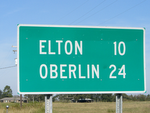
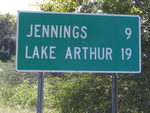
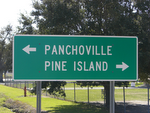
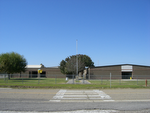
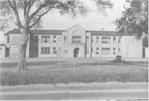
No comments:
Post a Comment